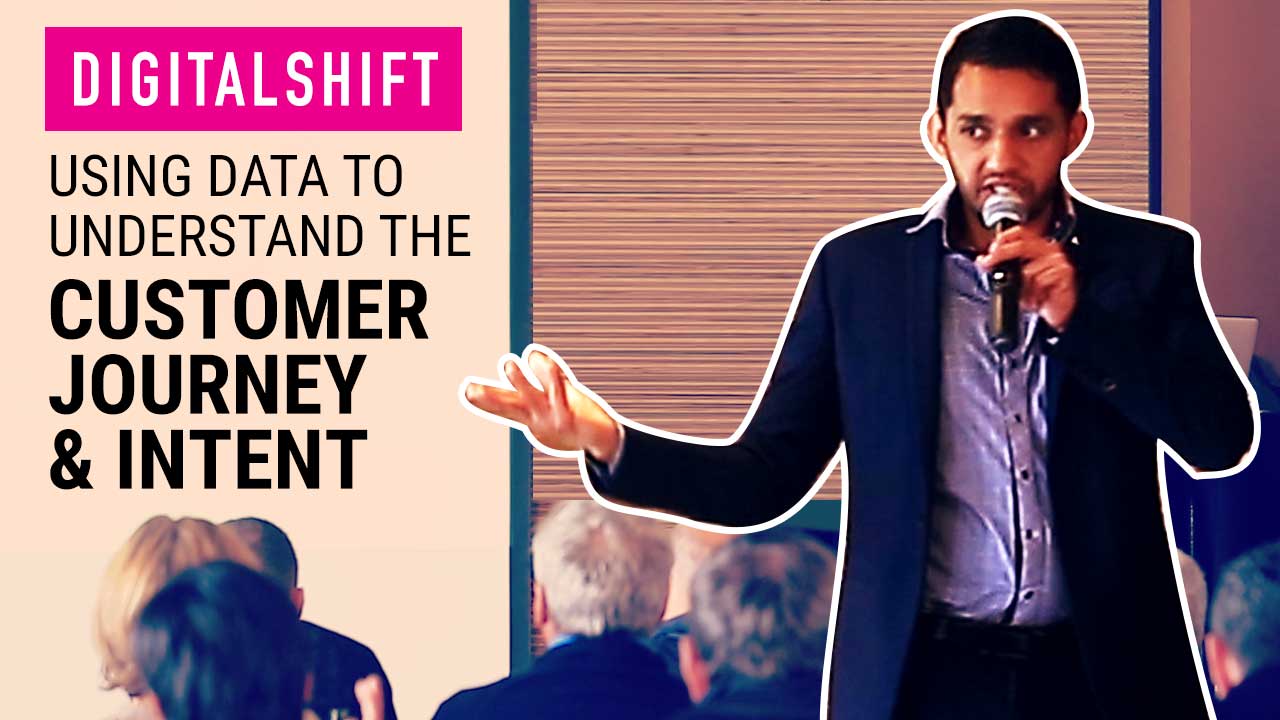Using Data to Understand the Customer Journey & Intent

How Can Data Help Us Understand Consumers?
Do you know the process or thoughts your customers go through from the moment they become aware of your business to the moment they transact?
With the enormous amount of data collected online today, we can dive deep into the behaviour of consumers and understand how and where they are transacting. By getting a better understanding of the quality of our businesses, what works and what doesn’t, we can make better marketing decisions and allocate resources more effectively to achieve our goals. It allows businesses to get on a more personal level with their consumers and create better engagement to attract existing or potential customers.
Here are some of the things we can examine with data:
1. The customer journey
Why is understanding a customer’s journey so important? – They allow businesses to see themselves through the eyes of a customer.
Customer journeys allow us to track the steps a customer goes through within your business from moment they become aware of your business to moment they transact. An example of a typical customer journey for someone who makes a purchase online would look like this: The user sees a paid ad, which prompts them to do an organic search for the product, which may lead them to the product’s website where they sign up to their email list. A few days later, when they receive an email, they’re brought back to the website, where they finally purchase the product and convert.
We can see the customer journey and deduce how a customer became an online sale by tracking their behaviours and previous purchasing history. This helps understand the experience customers have with the business to determine what needs improvement, what is attracting or causing lack of demand, when they are clicking on or off the website and why – All the details needed to add value to your customers experience with the business. It is a way to find out how to reward your customers, understand and engage them, and improve assistance with the overall journey.
2. Top conversions
From there, we can go deeper by examining top conversions. These are essentially the most effective customer journeys that lead to the most sales. It’s important to know what are the main reasons why people are converting so you are able to put emphasis on this aspect to generate even more sales than before.
Top conversions tell us the most popular path customers take when making a purchase and popular pages visited. They tell us whether the majority customers are funnelling in through a single channel, or finding multiple pathways that eventually end in a transaction.
However, Conversion rates don’t always necessarily mean the higher the rate the more revenue for the business. For example say you had two conversion rates one being 15% and the other 30%. The 15% rate could have a higher revenue total compared to the 30%. This is because conversion rates don’t take into consideration the consumers total spend per sale or the fact not every visitor is making a purchase, they could be simply making an account or enquiry.
3. Top performing categories
Diving deeper again, we can use the metric of top performing categories. By knowing which product category is doing best in the marketplace, we can understand trends in consumer behaviour. These trends help us see what’s popular and if it’s a seasonal trend, when it’s popular. For example, you don’t want to be trying to sell products or services that aren’t of interest to your consumers. Say another product similar to yours entered the market and was becoming very popular but you weren’t in the loop, that is going to affect the sales of your business.
Understanding which products are performing the best will help you make informed marketing decisions. Google Analytics allows you to sort your product information by product revenue. This shows which products are creating the most money for your business so you are able to focus your marketing efforts on those top performing categories which are most likely going to boost sales.
4. Search types
Apart from volume, data helps us see the different ways people are searching for a product. For example, when searching for a product category like beer, users will often type something more specific than “beer” into Google. They may add a prefix such as “craft” or “low carb” to find results that align closer with what they’re looking for.
Understanding what your customers are exactly searching for or what specific search terms will get people on your site will help maximise your SEO potential by making sure your website is appearing at the top of their search so your website is the first thing they see and click on.
5. Research-driven search
Across the board, we are seeing that modern consumers prefer to do their own homework when it comes to products and the specific differences between them.
More than ever before, consumers are actively searching to find out more about products by looking at different customer reviews, popularity, comparing competitors, pricing, information etc.. to make sure they are getting the best deal. For example, say a customer was thinking of buying a specific car then found that same car being sold by a different company that was holding a special promotion, this would play a huge contributing factor in determining which business to buy from.
We are finding users research-driven behaviours reflected in the market. Continuing on with the beer example, Craft beer, which are specialty products defined by their uniqueness, is surging in the beer category. By utilising all the ways data allows us to understand consumers, we can more effectively shape our marketing strategy based around what we can identify with consumer behaviours.
The more customer data collected, the more businesses can better serve the wants of their customers by being made aware of changing consumer trends from this data so they can adapt to these changes leading to an increase in revenue and sales.





